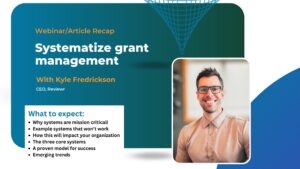
Scholarships 2.0
Schedule a Demo Calculate your ROI The Critical Importance of Systems in Scholarship Management: A Comprehensive Guide and Proven Framework In an
Reviewing scholarship applications is essential to the success of running an online scholarship program. As a scholarship program manager, it’s important to think about the experience and process for non administrators such as the applicants and the review committees.
When it comes to creating a review or evaluation process, it’s important to focus on developing a review workflow that fairly and accurately defines who the scholarship recipients are – but also in a way that is user friendly and engaging for the committee. Here is a sneak peak at how Reviewr powers this process.

Schedule a Demo Calculate your ROI The Critical Importance of Systems in Scholarship Management: A Comprehensive Guide and Proven Framework In an

Schedule a Demo Measure your grants ROI TL;DR: Why Systematic Grant Management Matters Problem: Most grantmakers use disconnected tools (spreadsheets, email, shared
